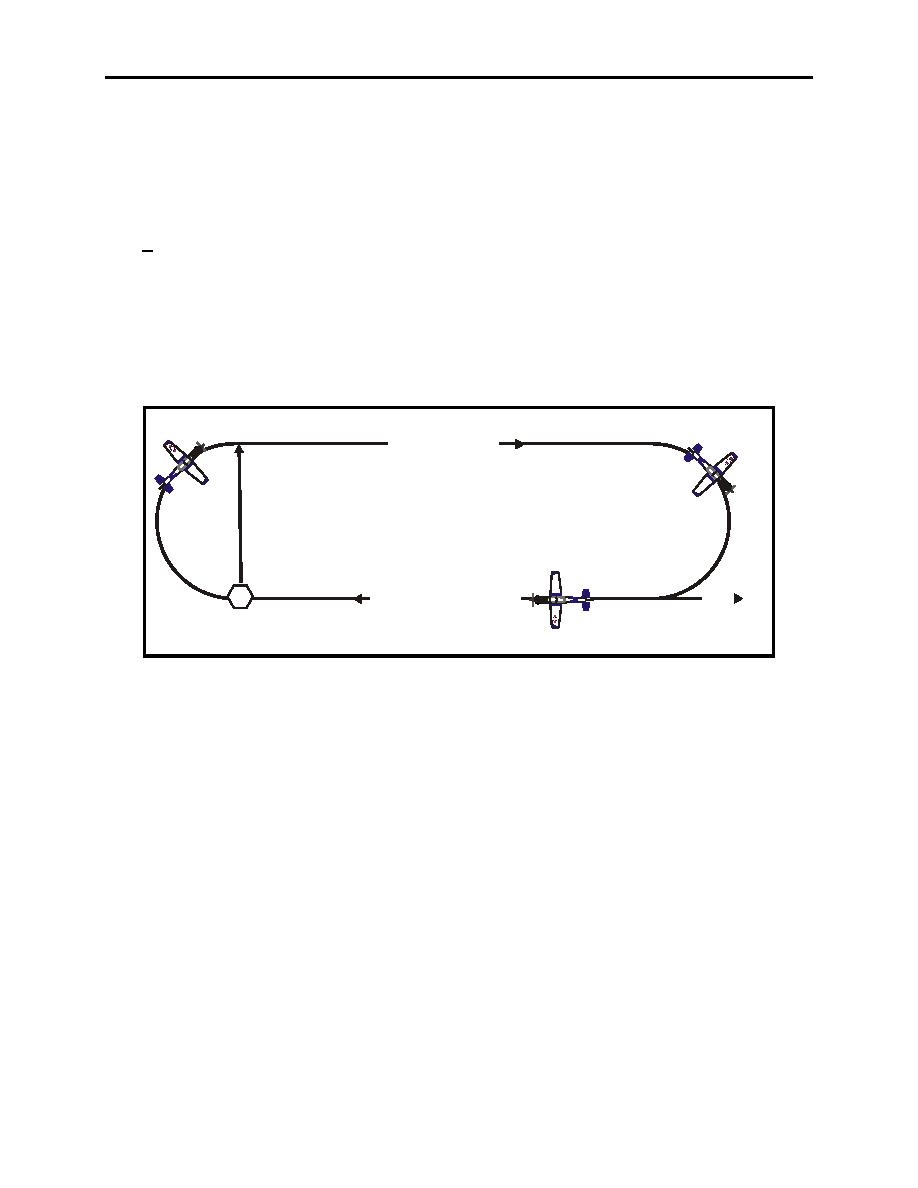 |
|||
|
|
|||
|
|
|||
| ||||||||||
|
|  T-6A INSTRUMENT NAVIGATION
CHAPTER FOUR
5. Compensate for wind effect primarily by applying drift corrections on the inbound and
outbound legs. When flying outbound, triple the inbound drift correction to avoid major turning
adjustments. For example, if your inbound correction is 8 left, then your outbound correction
would be 24 right.
6. Determine the entry turn by observing the aircraft's heading when it reaches the holding
fix; + 5 in heading is considered to be within allowable good operating limits for determining
entry.
7. Determine the holding course and the reciprocal of the holding course. The holding course
is the course inbound to the holding fix (Figure 4-11). The reciprocal of the holding course is
used to determine the direction of entry turn. When the holding fix is a station, the reciprocal
will be the same as the radial.
ABEAM
NO WIND HDG 090
POSITION
OUTBOUND LEG
HOLDING SIDE
270 HOLDING COURSE
090
HOLDINGRADIAL
HOLDING FIX
NON-HOLDING SIDE
Figure 4-11 Holding
8. Determine the direction of entry turn. The position of the reciprocal of the holding course
in relation to the heading index at initial holding fix passage will determine the direction of entry
turn.
9.
Standard Holding
a.
Sector A (TEARDROP). If the reciprocal of the holding course is between the
heading index and 70 to the right of the heading index, make a teardrop entry. This
is accomplished by turning in the shortest direction (left or right) to a heading 30 less
than the reciprocal of the holding course.
b.
Sector B (PARALLEL). If the reciprocal of the holding course is between the
heading index and 110 to the left of the heading index, make a left turn to parallel
the reciprocal of the holding course.
c.
Sector C (DIRECT ENTRY). If the reciprocal of the holding course does not meet
the criteria listed in A or B above, turn right to the reciprocal of the holding course.
INSTRUMENT NAVIGATION
4-33
|
|
Privacy Statement - Press Release - Copyright Information. - Contact Us |